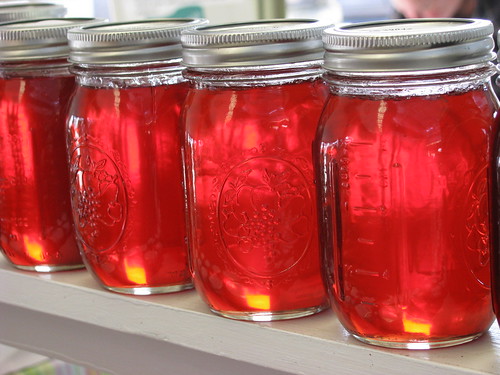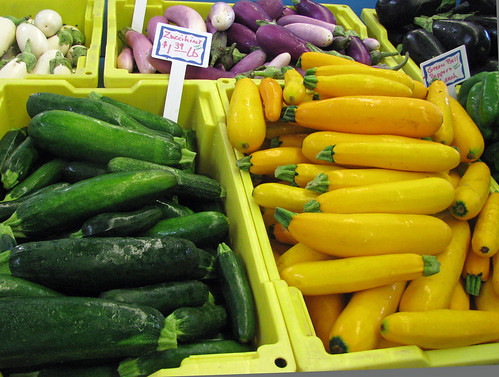
There is plenty of passion for the fresh tomato. When this veggie-turned-fruit took off in the world of nutrition, it was good news for those who love it – and so many of us do, enjoying it in sauces, on pizzas, in sandwiches, and in salads. But during the season, the fresh tomato is infinitely easy to enjoy. A local beefsteak or heirloom can be sliced and eaten with just salt and pepper. Or, add mozzarella, olive oil, and basil and eat within minutes of picking to enjoy all the tasty sweetness that nature intended.
While wild blueberries are heralded for their versatility with meals – they move from breakfast to lunch to dessert with ease – tomatoes also work in unexpected ways during the season, making full use of their categorization of both fruit (botanically) and vegetable (culinarily). The tomato is an end-of-summer delight whether on toast or with eggs for breakfast, cooked into a tarte for lunch, or served, as in this Green Tomato Pie, as a palate-pleasing dessert. And, just as wild blueberries show off there high polyphenol content in their deep blue skin, tomatoes advertise lycopene in their fiery color – the nutritional key to what makes them a superior indulgence.
The Skin They’re In
We know much of the mystique of the wild blueberry resides in its skin. When you eat a serving of wild blues, you are eating plenty of tender, colorful skin, and that’s where the nutrients reside. Polyphenols, which are responsible for the dark blue coloring, carry the potent antioxidant effect. Tomatoes are similar – their skin is their strength. The red pigment is a sign of nutritional value and the existence of lycopene, a phytochemical found in red fruits and vegetables. It’s present in peppers, carrots and watermelon as well.

Studies show lycopene holds antioxidant properties – at least when it occurs in its natural form. Tomatoes also contains vitamin C, folate, and potassium which may work in synergy with lycopene to make the tomato so nutrient rich. Because of its antioxidant properties, the tomato can help protect us against cancer and other diseases of aging by protecting our cells from damage.
But is the buzz about tomatoes really news? Sort of. While we’ve always known fruits and vegetables provide us with high nutritional value, it’s only recently that scientists have made the connection between the tomato and lower risk of disease. Also notable is research indicating that unlike most fresh fruits and vegetables, cooking tomatoes increases their nutrition. In fact, a recent study indicates that the lycopene present in a cooked tomato may slow the growth of or even kill prostate cancer cells. Cooking, it seems, increases the bioavailability of the lycopene, which is bound within the raw tomato in a way that the body can’t efficiently use. It’s news that makes our love for eating tomatoes in sauces and cooked into so many favorite recipes quite fortuitous.
Buying a Killer Tomato
If you must look beyond your own backyard for a tomato this season, here are some ways to get the best at farmer’s markets and grocery stores:

- Choose a local tomato. Local has less distance to travel, so it’s fresher and tastier, and it’s picked when it’s riper. Commercial tomatoes endure off-the-vine ripening and hybridization that saps flavor, the bane of winter tomato lovers.
- Try the heirlooms. Heirloom tomatoes are grown naturally and represent the best of the bunch.
- At the grocery store, go for UglyRipe or Kumato. These varieties have sweeter, juicer taste, according to Cook’s Illustrated.
- Don’t choose photo-worthy tomatoes. Non-commercial tomatoes are rarely perfectly shaped; even a crack in the skin is A-OK, says Cook’s. Also, don’t be fooled by the vine-ripened label, they advise. While better than commercial tomatoes that are picked while green and blasted with ethylene gas, the “vine-ripened” moniker means most of the ripening still occurs off the vine – just 10% of the skin is required to be red to get the designation.
- Never refrigerate. Cold reduces flavor, so store tomatoes at room temperature, even if they have been cut (then, just wrap in plastic and use within days).
A Tomato Makes the (Entire) Meal
Tomatoes bring versatility to the table when summer is high. While sauces are fine for winter comfort foods, recipes that capitalize on freshness are the key to summer tomato eating. Here are four that represent an entire meal, proving that no matter the course, tomatoes never have to sit it out this time of year.
The Cocktail: Star Ledger’s Spirited Gardner serves up a tomato-infused cocktail garnished with a mozzarella ball. Refreshing!
The Salad: Making full use of the season’s bounty is this superfruit-infused Tomato, Watermelon, & Blueberry Salad from About a Mom.
The Entrée: Lunch doesn’t get any better when it comes to fresh tomatoes than this Tomato Basil Frittata from Connecticut Chef Melanie Driscoll.
The Dessert: This Bon Appetit Tomato Tarte Tatin is a taste revelation as well as a lycopene winner. According to the description, “As the tomatoes cook in the caramel, they become sweet and tender but retain their clean, fresh flavor. Prepare to be blown away.”








